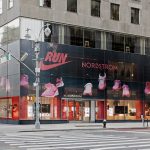Despite a decline in Oakley's sales to the U.S. Army, sunglasses led the growth at Luxottica Group SpA in the third quarter ended Sept. 30. Oakley and Ray-Ban grew in the 10 percent range while Sunglass Hut outperformed the company's optical retail chains as beachgoers in the Mediterranean resumed spending on premium sunglasses.
LUX reported revenues at its Wholesale Division, which owns Oakley and Ray-Ban and makes Armani and other luxury branded sunglasses under license, increased 6.1 percent, or 13.1 percent currency neutral (c-n), to €686 million in the quarter ended Sept 30, compared with the same quarter in 2012.
Oakley and Ray-Ban sales grew strongly in emerging markets and were responsible for the company outperforming the industry in LUX’s native Italy during the quarter.
“It was visible at the seaside,” said Luxottica Group CEO Andrea Guerra. “It was visible around Italy, the amount of new sunglasses from Oakley and Ray-Ban on people's faces. Unfortunately what is called the U.S. sequestration is really penalizing our military division in Oakley.”
Oakley sunglasses and gloves have long been popular among members of the U.S. Army Special Forces, but demand has dropped off since a 10 percent across-the-board cut in federal spending kicked in Oct. 1, 2012.
LUX does did not break out Oakley’s performance for the quarter, saying only that sales at the Wholesale Division in the United States grew 8.8 percent in U.S. dollars after excluding the brand.
Growth was much weaker at the company's Retail Division, which owns major optical chains in several countries. Global sales declined 3.3 percent (+4.2 percent c-n) to €1.10 billion. Executives said flat comparable store sales at LensCrafters and Pearle Vision in North America offset strong growth at Sunglass Hut, which reported U.S. comp store sales growth of 6.3 percent and global comp store sales growth of 7.5 percent. Sunglass Hut saw particularly strong growth in the United Kingdom and emerging markets.
All told, the appreciation of the euro knocked LUX's sale growth rate from 7.4 percent c-n to 0.1 percent. A 3 percent increase in the value of the euro against the dollar accounted for about half that deterioration. LUX, which operates in 130 countries, has major operations in Australia, Brazil and Japan, where currencies fell 17, 15 and 28 percent respectively against the euro during the quarter.
Southern Europe continued to rebound during the quarter. Overall sales to the Mediterranean were up 13 percent. Guerra said that while Spain’s recovery is accelerating, she has doubts Italy could sustain growth rates seen during the summer.
“I really don't think that Italy has changed dramatically,” said Guerra. “I think that spring and summer have been pretty good. So, now we are entering a completely different season. Let's wait and see.”
Regardless, she said Oakley and Ray-Ban sales are on track to finish the year up in the high-single to low-double-digit range and accelerate back above 10 percent in 2014. She said LUX is working on two acquisitions that she expects to close in the first half of next year.













